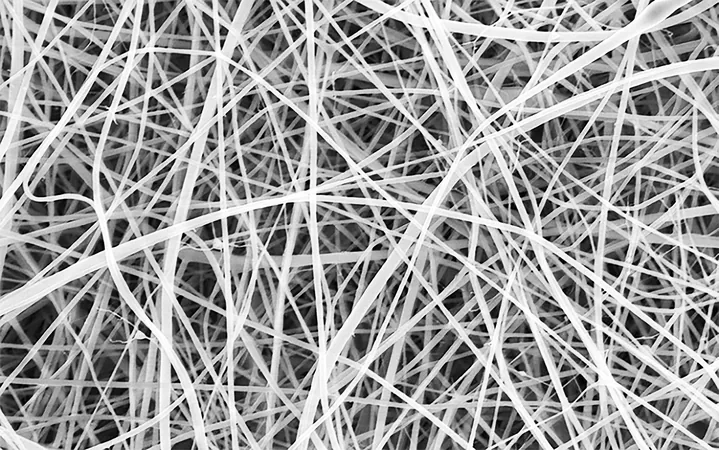
Gut Microbiome: The Hidden Key to Tamoxifen's Effectiveness in Breast Cancer Treatment!
2024-11-26
Author: Wei
Introduction
In a groundbreaking study conducted by researchers at the University of California, Irvine, new insights reveal a surprising connection between the gut microbiome and the response rates to tamoxifen, a crucial drug in preventing breast cancer recurrence. This research highlights why approximately 50% of women with breast cancer do not respond effectively to this widely used treatment.
Study Publication and Findings
Published in the esteemed journal mBio of the American Society for Microbiology, the study points to the trillions of microorganisms residing in our intestines as pivotal players in how the body processes tamoxifen. Lead author Yasmine Alam, a PhD candidate in biological chemistry at UC Irvine, emphasized the importance of these findings. "While tamoxifen is a common treatment for breast cancer prevention, the stark reality is that nearly half of patients do not benefit from it. The varied responses could be linked to each individual’s unique gut microbiome."
Impact of Gut Bacteria on Drug Pharmacokinetics
The research delves into how different bacterial compositions in the gut can alter the pharmacokinetics of tamoxifen—essentially how the drug is absorbed, distributed, metabolized, and ultimately eliminated by the body. A particular focus was on enzymes produced by specific gut bacteria, which may significantly influence the efficacy of tamoxifen. When ingested, tamoxifen travels through the gastrointestinal tract where it is absorbed; it is then metabolized in the liver into its active form to combat breast cancer. However, researchers discovered that a sugar molecule can attach to the drug, diverting it back into the intestine for disposal rather than allowing it to enter the bloodstream, where it can effectively target cancer cells.
The Role of Beta-Glucuronidase
One of the standout discoveries from the study is the role of beta-glucuronidase—an enzyme produced by certain gut bacteria. Alam explained, "We found that these enzymes could recycle tamoxifen back into the bloodstream, making the drug more potent. Notably, the type of bacteria Bacteroides fragilis was found to enhance the effectiveness of these enzymes in increasing tamoxifen blood levels."
Potential Implications for Breast Cancer Treatment
The implications of this research extend far beyond theoretical discussions. As we gain a deeper understanding of the microbiome’s role in tamoxifen metabolism, there is potential for developing diagnostic tests, such as simple stool tests, to predict which patients might respond favorably to the treatment and those who may not. This stratification could revolutionize breast cancer care.
Future Directions
The research team stated, "Metabolism affecting pharmacokinetics isn't limited to host enzymes; it also significantly involves gut microbiota. Our findings suggest that the microbiome's capability to manage drug concentrations at therapeutic sites in the body is crucial for predicting and enhancing patient responses to tamoxifen." Moreover, the team hinted at the possibility of dietary modifications that could cultivate beneficial bacteria in the gut, thereby boosting tamoxifen’s effectiveness. This suggests a more comprehensive approach to cancer treatment—incorporating not just pharmaceuticals but also lifestyle changes to optimize therapeutic outcomes.
Conclusion
Looking ahead, the ultimate goal of this research is to personalize treatment strategies based on an individual’s unique microbiome composition. This could mean innovative diagnostic tools designed to evaluate responses to tamoxifen, enhancing patient care for breast cancer and possibly improving overall survival rates. As this research progresses, it raises the question: Could our gut health hold the secret to tailoring more effective cancer treatments in the future? Only time will tell, but one thing is certain—it’s time to pay closer attention to our gut microbiome!






 Brasil (PT)
Brasil (PT)
 Canada (EN)
Canada (EN)
 Chile (ES)
Chile (ES)
 España (ES)
España (ES)
 France (FR)
France (FR)
 Hong Kong (EN)
Hong Kong (EN)
 Italia (IT)
Italia (IT)
 日本 (JA)
日本 (JA)
 Magyarország (HU)
Magyarország (HU)
 Norge (NO)
Norge (NO)
 Polska (PL)
Polska (PL)
 Schweiz (DE)
Schweiz (DE)
 Singapore (EN)
Singapore (EN)
 Sverige (SV)
Sverige (SV)
 Suomi (FI)
Suomi (FI)
 Türkiye (TR)
Türkiye (TR)